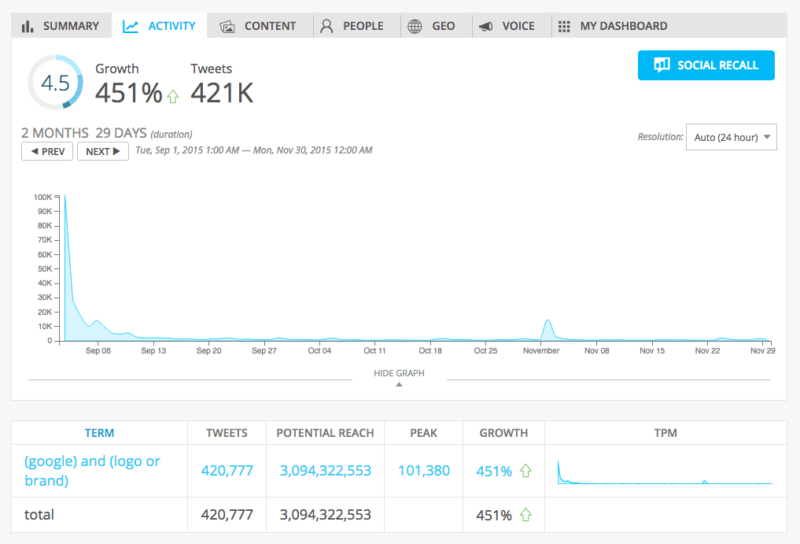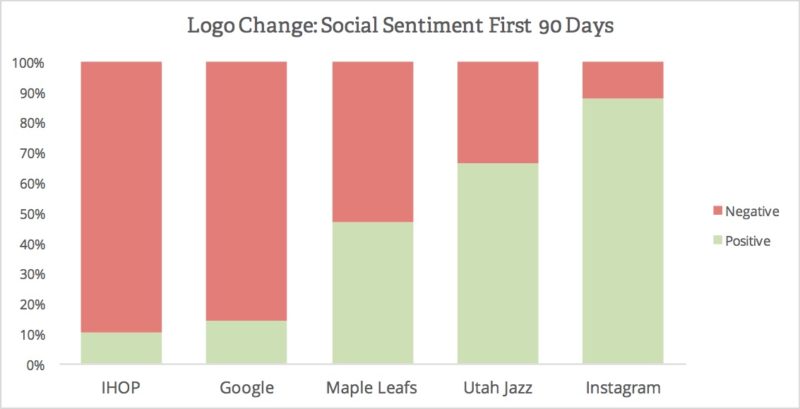Your brand refresh: What should you expect from social?
When you're planning new branding, icons or logos, how will your audience react? Columnist Chris Kerns dives into Twitter data to reveal what social media can tell you about brand refreshes.
![]()
Several weeks ago, Instagram surprised users around the world with a colorful new direction for its logo. The new design began appearing on desktop and mobile app home screens and sent waves of hot takes shooting across social networks.

With all the opinions and conversation on the update, it made me wonder what social media data might be able to tell us about other recent brand refreshes. Social media, after all, is now the world’s largest real-time focus group, as most people aren’t shy about sharing their opinions with the rest of the world.
What patterns can we see with announcements around new branding, icons and logos that will help us set our expectations as we plan future brand refreshes? Will customers and prospects embrace the new direction put forth by a brand, or will they dig their heels in and resist change?
I mined Twitter data over the past 13 months to check the audience’s reaction to a series of brand and logo changes (including Google, IHOP, Sbarro, the Toronto Maple Leafs, the Utah Jazz and Instagram). By checking initial reactions, analyzing the long-tail of conversation and using our Intelligence tool’s sentiment capabilities, I was able to find some similarities across various industries.
New logos, new data
After looking at the data, I could see that while each brand refresh was received in a slightly different way by the audience, three main patterns still emerged.
1. People care (and then they don’t)

That wave of hot takes that come with every brand refresh won’t last long. For every brand I looked at, the majority of the rebrand conversation happened within two days of the announcement (With many brands — including IHOP, Instagram and the Maple Leafs — the number was over 70 percent of the overall brand conversation.)

After that initial spike, the conversation dwindled as followers quickly found other things to talk about. So a message for any brand seeing a negative reaction to a logo change: Take a deep breath, and know that if the public doesn’t love your new direction, they will probably get over it pretty fast.
2. Social media might not love it

The data shows that a positive social reaction for brand updates is not a given. For over half of the brands with a material amount of sentiment for their rebrand, there was more negative sentiment than positive.

But we saw two brands that bucked that trend. The Utah Jazz enjoyed 66 percent positive sentiment among the entire social audience for their recent logo and uniform update. And the most positive reaction was seen by Instagram, which enjoyed 88 percent positive sentiment for their branding update from the social audience.
3. Your rebrand is more top of mind for you vs. your audience
A brand refresh is not an easy task, and while all marketers work hard to make sure that everything is ready for the big launch, social data can show us that maybe your audience isn’t paying quite as much attention to your marketing efforts as you are.

For the majority of the brand refreshes that we looked at, the conversation concerning the changes for 90 days after launch was almost immaterial in comparison to overall brand conversation.
So while it’s important to keep an eye on the reaction from your audience, know that most of the celebration (or outrage) is probably coming from a few die-hard fans on either side of the fence, and the conversation won’t last long.
In a changing world, keep data as your constant
With all the work that goes into every aspect of a brand launch, it makes sense to concentrate your efforts and put your best foot forward.
As brands, business models, messaging and tactics adapt over the years, the need for good information becomes even more crucial to every business. In an ever-changing world, taking on a data-driven strategy to set expectations can help keep heads calm during exciting times — and it will be the one constant to keep you on track.
Contributing authors are invited to create content for MarTech and are chosen for their expertise and contribution to the search community. Our contributors work under the oversight of the editorial staff and contributions are checked for quality and relevance to our readers. MarTech is owned by Semrush. Contributor was not asked to make any direct or indirect mentions of Semrush. The opinions they express are their own.
Related stories